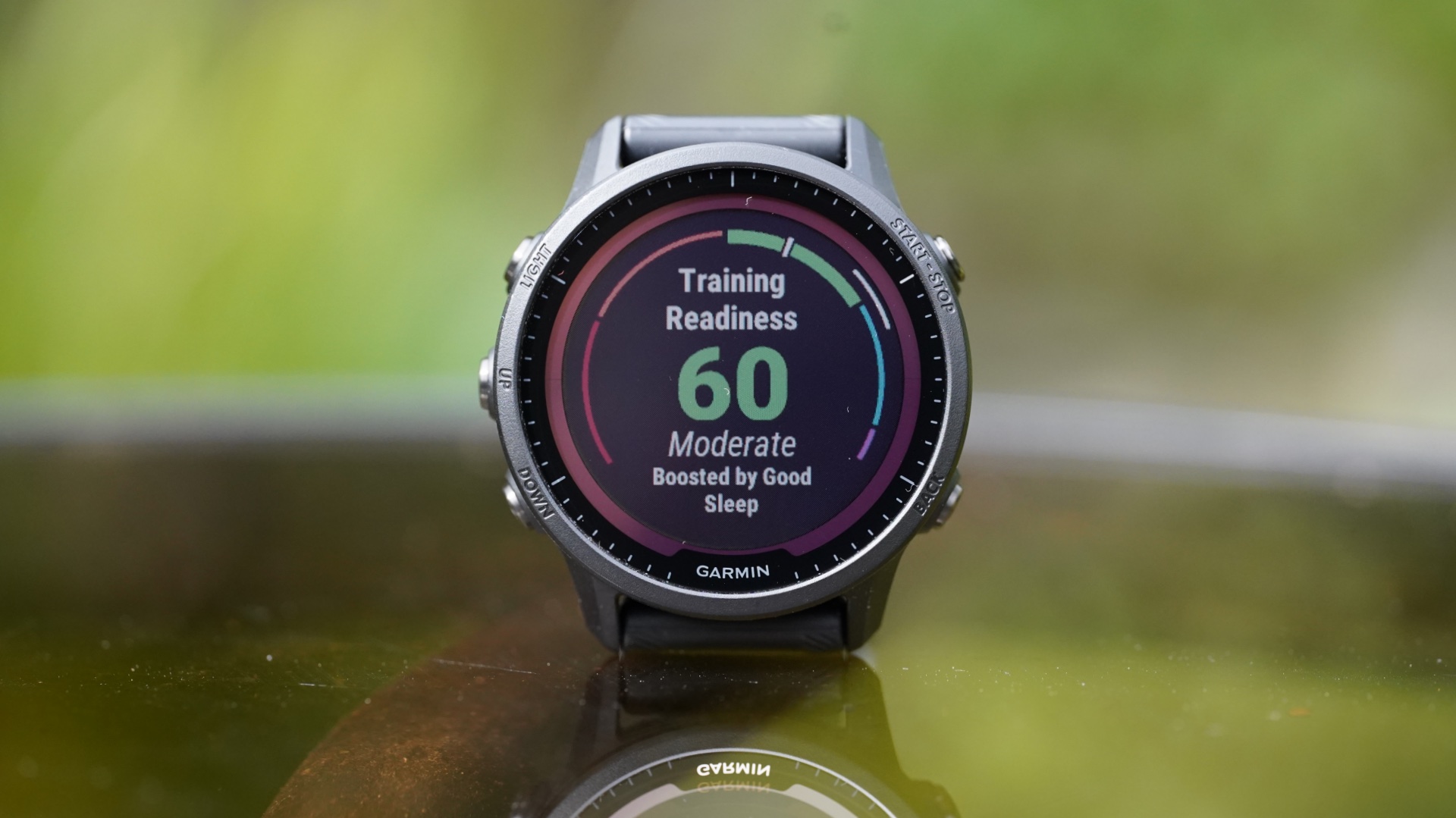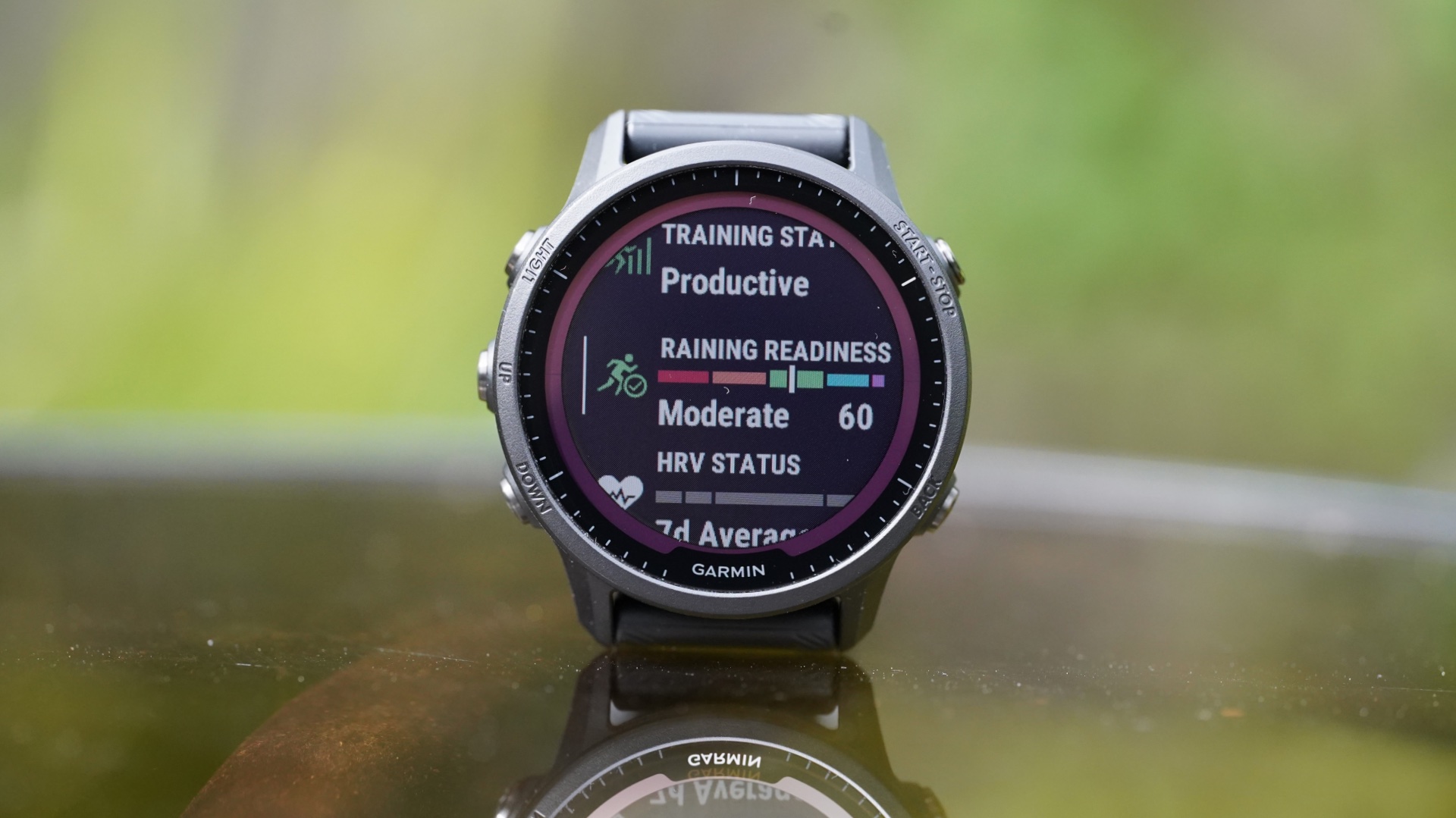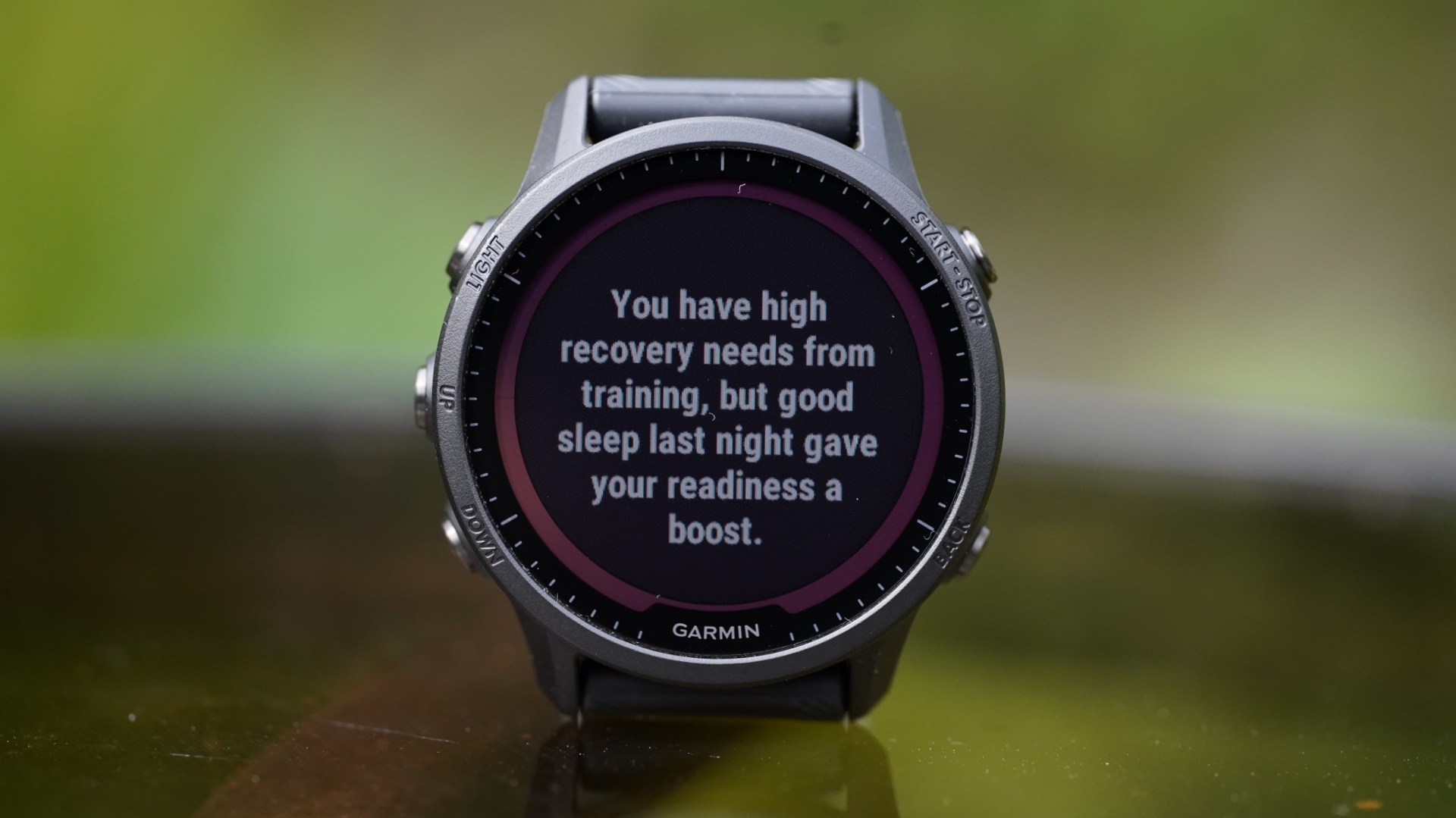

While most people are distracted by trying to work out differences in physical design between the excellent Garmin Forerunner 945 and the newly announced Forerunner 955, the discerning athlete – such as yourself – focuses on the new features instead. Most notably, what's the new Training Readiness work and how does it work?
Training Readiness is a feature exclusive to the Garmin Forerunner 955 (for now anyway), and despite sounding somewhat similar, it's very different from Training Status, a feature already available on many of the best Garmin watches.
That said, the Training Status feature is different on the Forerunner 955 as it takes into account a new metric only available on the two new Forerunners – heart rate variability.
Training Readiness vs Training Status
Garmin's Training Readiness tells you how ready your body is to exercise on a scale of 0-100 based on six metrics, including sleep, recovery time, heart rate variability status, acute load, sleep and stress history.
In comparison, Training Status is more of a reactive feature that considers acute load, load focus (low and high aerobic load, anaerobic load), VO2 max, heart rate variability and current recovery status.
In short, Training Status provides an insight into your overall effort – whether you're training productively, peaking or strained (overtrained) – while Training Readiness is more of an indicator of whether it's a good day to go hard or take it easy.

How does Garmin's Training Readiness feature work?
[Training Readiness heavily relies on sleep data, so for the best results, you should wear your Garmin Forerunner 955 24/7 and especially for sleeping.]
Sign up to the T3 newsletter for smarter living straight to your inbox
Get all the latest news, reviews, deals and buying guides on gorgeous tech, home and active products from the T3 experts
Of the six metrics taken into account, two are specifically sleep-related: sleep, sleep history, and one is sampled as you sleep: HRV. Acute load and stress history are measured during waking hours.
The Forerunner 955 is one of the first Garmin wearables to introduce heart rate variability (HRV) measurement. HRV is the time difference between each heartbeat when you sleep; the higher your HRV, the more ready your body is for strenuous workouts.
Poor sleep quality and too intense a workout regime can negatively impact HRV. It changes as you get older, but a steady and balanced workout routine can help maintain it. Poor sleep quality also affects HRV – not in a good way.
Having two sleep metrics included can be confusing, but there is a reason why Training Readiness includes both sleep and sleep history. Sleep on any given day will determine how rested your body is but even if you had the best sleep ever wouldn't matter if on the previous seven days you hardly slept any, hence why they both are part of the score.

Acute load is self-explanatory: it's your training load, as in how much exercise you did recently. Recovery time is based on the intensity of your latest workout. Finally, stress is also taken into account – the more stressed you are, the less able you are to work out hard.
Your Training Status score will almost always reduce after a workout; however, unlike the Body Battery score, it won't fluctuate a lot each day, although it very much depends on your workout load. If your Training Status score is low because of poor sleeping habits and high-stress levels, a single workout might completely obliterate your score.
Garmin's Training Readiness feature: Should you care?
Is the Training Readiness feature useful enough to make the Forerunner 955 stand out from the crowd among the best triathlon watches? In itself, the answer is probably no; however, you must consider that the Training Readiness is just one of the many features the Forerunner 955 has to offer.
The flagship Forerunner also boasts a number of training features, accurate sensors, a top-notch ecosystem and more. The watch is comparatively light, especially considering the usefulness of the wearable.
Training Readiness adds another layer of training data to the already impressive array of features of the best Forerunner. If you're happy to live without solar charging – we'd recommend you get the Solar version – you can get the standard Forerunner 955 for less than the Forerunner 945. Now that's a bargain if we ever saw one.
Available now at Garmin US, Garmin UK and Garmin AU, the Forerunner 955 Solar has a suggested retail price of $599.99/£549.99/AU$949. A non-solar charging version, the Forerunner 955, is also available with a suggested retail price of $499.99/£479.99/AU$799.

Matt Kollat is a journalist and content creator who works for T3.com and its magazine counterpart as an Active Editor. His areas of expertise include wearables, drones, fitness equipment, nutrition and outdoor gear. He joined T3 in 2019. His byline appears in several publications, including Techradar and Fit&Well, and more. Matt also collaborated with other content creators (e.g. Garage Gym Reviews) and judged many awards, such as the European Specialist Sports Nutrition Alliance's ESSNawards. When he isn't working out, running or cycling, you'll find him roaming the countryside and trying out new podcasting and content creation equipment.